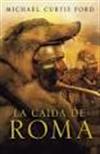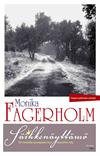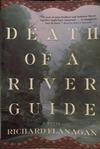'Crossing Over
Turning those old bargain books into new BookCrossing books
by kz4ufoJune 15, 2004
Most BookCrossers cannot resist the urge to buy bargain books from used bookstores, thrift shops, library sales and flea markets. Quite often, these books have been neglected by their previous owners and not in the best shape. There are a few things that
can be done to turn those bargain books into new BookCrossing converts.
If your bargain books have been crammed inside old boxes and suffer from poor ventilation, the first thing you want to do is take a barely damp sponge and lightly clean off the covers of each book. You want to make sure there is very little moisture in the sponge, to prevent the covers from warping. Lay each wiped book separately on a table to dry for a few moments. This will allow you to handle the books for the remaining cleansing process.
Chances are the books have a faint order, whether from poor storage, a heavy smoker or from someone’s unnatural obsession with mothballs. To remove light odors, a simple sheet of laundry fabric softener will absorb the smell. Simply grab the book tightly in one hand and rub a fabric softener sheet over the paper edges. If the book has slight yellowing, you will notice that the fabric softener will start taking it off. For books printed with yellow edges, you will notice the softener making the yellow turn a lighter shade. If you are cleaning hardbacks books with jacket covers, remove the covers first to avoid any accidental tearing. After rubbing a few seconds, flip the book pages and smell the book. If the odor is still there, try rubbing the edges again for a few more seconds.
If the smell is still very strong, you will want to locate an air-tight storage. Prepare each book as you would if it had light odors. Then, place the books in the storage container, along with several sheets of fabric softener. Depending on the strength of the odor, plan on leaving the books in the container for a day or two. If the books are in there longer than a day, you may want to replace the fabric softener sheets with fresh ones.
If you rubbed the fabric softener sheets a little too hard along the paper edges, you may notice the book cover is covered with a little dust. Just take your barely damp sponge and wipe off the covers again. Allow to dry again for a few seconds.
Next is what most BookCrossers dread – the price sticker and ISBN label outbreak on the covers. The more stickers and labels on the covers, the less attention our BookCrossing labels get. Yet, other stickers and labels can easily be removed without denting or digging holes into the book cover.
First, take as much of the sticker or label off as you can, without damaging the book. Even if you are able to peel off the label, there usually is some sticky residue left on the book cover. There are several products on the market that will remove labels or sticky residue. One such product is Goo-Gone Spray Gel ®. Only use these products on coated paper, such as the outside covers. Never use them on regular paper or inside covers. Take a soft, but durable tissue or paper towel and squirt a small amount of your spray onto the tissue. Lightly rub the area containing the torn label or sticky residue. It should start to lift off. Depending on the size of the area, this may take a few seconds to a few minutes. Be patient and if your tissue starts to get sticky or tears, replace it with a new one. Remember; do not saturate the tissue with spray, just use a small amount.
Books purchased from library sales may have library labels on the covers. Some BookCrossers like to remove or cover these up so that people do not think they are lost library books. If you want to remove the labels, be forewarned, some come off easily; others will tear the cover or damage the binding.
After removing the sticky residue, you may want to take a barely damp sponge and once again wipe off the covers and allow to the books to dry for a few seconds.
Torn covers can be repaired with wide clear packaging tape, clear contact paper, or one-sided laminate. Make sure you unwrinkle any creases along the edges before you coat the cover, if you are using one of these methods. Hardback books with torn jacket covers can be repaired with any of the methods above; however, if the book edges are slightly wrinkled or have minor tears, you may prefer to just use clear packaging tape along the edges. To repair jacket covers, make sure they are off the book and located on a flat surface. Also, something to note, if the hardback is in good shape, but the cover is very poor or the inside jacket shows sign of mildew, you may decide to eliminate the cover.
Spiny binding on paperbacks is not only unsightly, but also makes the book hard to hold its natural shape. Any paperbacks that need to be reshaped can easily be placed between two or more heavy hardbacks for a couple days. The weight of the hardback books should help the paperback flatten. For books with extremely poor spines, you may want to check for ungluing.
Books that come unglued from their spine can be repaired with a small amount of craft or bookbinding glue. These books will have to be watched until the glue dries, to make sure the glue is not separating from the binding. If it dries without contacting, that will create a glue build-up between the spine and the bookbinding.
After the outside of the books have been repaired, the inside will need some attention. First go through the book and unwrinkle any creases that have been made. Secondly, take a quick glance at the pages. See if any have been torn. If you find a tear, use narrow transparent tape (the clearer the better) and neatly tape the page together again.
Check the inside covers for the previous owners’ names or remarks. If written in pencil or light pen, lightly erase any remarks. If there are address labels or book plates inside, trying removing or covering these up as well.
Book inscriptions bring mixed feelings to some people. If it is a small area and you can cover it up and want to, go right ahead as it is your book now. However, if it is a large area or you do not want to cover it up, consider making a special note or label. Have it state something like “Where has this book been? Who’s lives has it touched? Log on to BookCrossing.com.” near the inscription. Of course, if you purchased the book at a bargain sale, you have now idea where it came from prior to the sale, but your Finder will not know that. It may make the Finder a little more curious and prompt them to log onto BookCrossing. Making a note of the book inscription and what you thought about it would also add to the journal entry.
After you have finished preparing the books, they will be ready to add all your BookCrossing labels and stickers.
Most used book stores and thrift stores have a free box of books that are almost ready to disintegrate. Pick up one or two of these books and practice these techniques. You may be amazed how good your books look.
No doubt, family and friends will tease you about your book “bathing”, but do not worry about it. Just tell them it is part of the ‘Crossing over - Turning those old bargain books into new BookCrossing books.
If your bargain books have been crammed inside old boxes and suffer from poor ventilation, the first thing you want to do is take a barely damp sponge and lightly clean off the covers of each book. You want to make sure there is very little moisture in the sponge, to prevent the covers from warping. Lay each wiped book separately on a table to dry for a few moments. This will allow you to handle the books for the remaining cleansing process.
Chances are the books have a faint order, whether from poor storage, a heavy smoker or from someone’s unnatural obsession with mothballs. To remove light odors, a simple sheet of laundry fabric softener will absorb the smell. Simply grab the book tightly in one hand and rub a fabric softener sheet over the paper edges. If the book has slight yellowing, you will notice that the fabric softener will start taking it off. For books printed with yellow edges, you will notice the softener making the yellow turn a lighter shade. If you are cleaning hardbacks books with jacket covers, remove the covers first to avoid any accidental tearing. After rubbing a few seconds, flip the book pages and smell the book. If the odor is still there, try rubbing the edges again for a few more seconds.
If the smell is still very strong, you will want to locate an air-tight storage. Prepare each book as you would if it had light odors. Then, place the books in the storage container, along with several sheets of fabric softener. Depending on the strength of the odor, plan on leaving the books in the container for a day or two. If the books are in there longer than a day, you may want to replace the fabric softener sheets with fresh ones.
If you rubbed the fabric softener sheets a little too hard along the paper edges, you may notice the book cover is covered with a little dust. Just take your barely damp sponge and wipe off the covers again. Allow to dry again for a few seconds.
Next is what most BookCrossers dread – the price sticker and ISBN label outbreak on the covers. The more stickers and labels on the covers, the less attention our BookCrossing labels get. Yet, other stickers and labels can easily be removed without denting or digging holes into the book cover.
First, take as much of the sticker or label off as you can, without damaging the book. Even if you are able to peel off the label, there usually is some sticky residue left on the book cover. There are several products on the market that will remove labels or sticky residue. One such product is Goo-Gone Spray Gel ®. Only use these products on coated paper, such as the outside covers. Never use them on regular paper or inside covers. Take a soft, but durable tissue or paper towel and squirt a small amount of your spray onto the tissue. Lightly rub the area containing the torn label or sticky residue. It should start to lift off. Depending on the size of the area, this may take a few seconds to a few minutes. Be patient and if your tissue starts to get sticky or tears, replace it with a new one. Remember; do not saturate the tissue with spray, just use a small amount.
Books purchased from library sales may have library labels on the covers. Some BookCrossers like to remove or cover these up so that people do not think they are lost library books. If you want to remove the labels, be forewarned, some come off easily; others will tear the cover or damage the binding.
After removing the sticky residue, you may want to take a barely damp sponge and once again wipe off the covers and allow to the books to dry for a few seconds.
Torn covers can be repaired with wide clear packaging tape, clear contact paper, or one-sided laminate. Make sure you unwrinkle any creases along the edges before you coat the cover, if you are using one of these methods. Hardback books with torn jacket covers can be repaired with any of the methods above; however, if the book edges are slightly wrinkled or have minor tears, you may prefer to just use clear packaging tape along the edges. To repair jacket covers, make sure they are off the book and located on a flat surface. Also, something to note, if the hardback is in good shape, but the cover is very poor or the inside jacket shows sign of mildew, you may decide to eliminate the cover.
Spiny binding on paperbacks is not only unsightly, but also makes the book hard to hold its natural shape. Any paperbacks that need to be reshaped can easily be placed between two or more heavy hardbacks for a couple days. The weight of the hardback books should help the paperback flatten. For books with extremely poor spines, you may want to check for ungluing.
Books that come unglued from their spine can be repaired with a small amount of craft or bookbinding glue. These books will have to be watched until the glue dries, to make sure the glue is not separating from the binding. If it dries without contacting, that will create a glue build-up between the spine and the bookbinding.
After the outside of the books have been repaired, the inside will need some attention. First go through the book and unwrinkle any creases that have been made. Secondly, take a quick glance at the pages. See if any have been torn. If you find a tear, use narrow transparent tape (the clearer the better) and neatly tape the page together again.
Check the inside covers for the previous owners’ names or remarks. If written in pencil or light pen, lightly erase any remarks. If there are address labels or book plates inside, trying removing or covering these up as well.
Book inscriptions bring mixed feelings to some people. If it is a small area and you can cover it up and want to, go right ahead as it is your book now. However, if it is a large area or you do not want to cover it up, consider making a special note or label. Have it state something like “Where has this book been? Who’s lives has it touched? Log on to BookCrossing.com.” near the inscription. Of course, if you purchased the book at a bargain sale, you have now idea where it came from prior to the sale, but your Finder will not know that. It may make the Finder a little more curious and prompt them to log onto BookCrossing. Making a note of the book inscription and what you thought about it would also add to the journal entry.
After you have finished preparing the books, they will be ready to add all your BookCrossing labels and stickers.
Most used book stores and thrift stores have a free box of books that are almost ready to disintegrate. Pick up one or two of these books and practice these techniques. You may be amazed how good your books look.
No doubt, family and friends will tease you about your book “bathing”, but do not worry about it. Just tell them it is part of the ‘Crossing over - Turning those old bargain books into new BookCrossing books.







